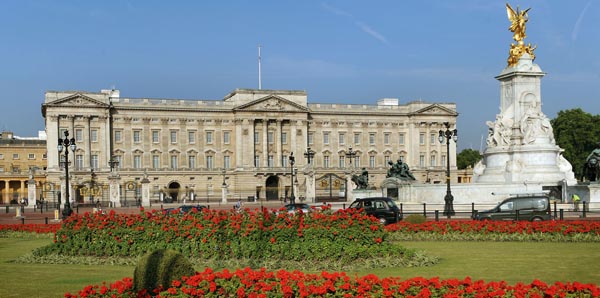Paul Gustafson takes the tour round the State Rooms at Buckingham Palace, one of the capitols top ten tourist attractions.

TO mark the 200th anniversary of the birth of Queen Victoria, a special exhibition, Queen Victoria’s Palace, tells the story of how the young monarch turned an unloved royal residence into the centre of the social, cultural and official life of the country.
PART of the annual summer opening of the royal State Rooms, which this year runs from July 20 – September 29, the exhibition highlights items from the Royal Collection and creates a magical immersive experience in the Palace’s Ballroom to bring to life the story of how Victoria made Buckingham Palace what it remains today – the headquarters of the Monarchy, a centre for national celebrations and a family home.
Victoria was only 18 years old when she ascended to the throne on June 20, 1837, and we learn that just three weeks into her reign the young Queen determined to move into Buckingham Palace despite the building being incomplete and with many of the rooms undecorated and unfurnished.
The Palace had been empty for seven years following the death of Victoria’s uncle, George IV, who had commissioned the conversion of Buckingham House into a Palace to the designs of John Nash. But the King never moved in, and his successor, William IV, preferred to live at Clarence House during his short reign. When Victoria became Queen her ministers advised her to stay at Kensington Palace, her childhood home, until Buckingham Palace could be brought up to a suitable standard, but Victoria wanted to move immediately and begin her new life.


We learn that in 1846 Victoria eventually secured £20,000 from Parliament towards development costs, and, with the input of an additional £50,000 from the sale of Brighton Pavilion to Brighton Corporation, the architect Edward Blore was commissioned to draw up plans for alterations to make the Palace fit for purpose as a family home as well as a fitting venue to host high profile state functions and grand social gatherings.
Between 1847 and 1849 the East Wing was added at the front, enclosing what had previously been an open, horseshoe-shaped courtyard and introducing the famous central balcony. Shortly afterwards a new Ballroom was added to the State Rooms to the designs of the architect James Pennethorne, fulfilling Victoria’s wish for a space ‘capable of containing a larger number of those persons whom the Queen has to invite in the course of the season to balls, concerts etc. than any of the present apartments can hold.’
We learn that during their time together at Buckingham Palace, Queen Victoria and Prince Albert held three magnificent ‘themed’ costume balls, and for the duration of this exhibition visitors can enjoy an enchanting immersive experience in the Ballroom where a waltz is danced by a troupe of elegant, ghostly, projected courtiers using a Victorian illusion technique called Pepper’s Ghost. It’s charming and otherworldly but also gives a delightful sense of what it might have been like to have attended one of those famous events.

The special exhibition provides both a theme and a promotional hook for this year’s summer opening of the Palace, but the rest of the tour remains as spectacular as ever, taking in amongst other things jewels such as the stunningly elegant Blue Room, the White Drawing Room, the Throne Room, and of course the masterpieces of the Picture Gallery.
Dedicated garden tours are also available though your general admission ticket allows you to stroll through part of the gardens as you make your way to the exit.
A succinct but informative audio guide makes the whole experience accessible, manageable and ultimately a thoroughly enjoyable and rewarding visitor experience.
The State Rooms, Buckingham Palace, including special exhibition Queen Victoria’s Palace are open to the public from July 20 to September 29 2019.
For more information and to book tickets, click here:

















You must be logged in to post a comment.